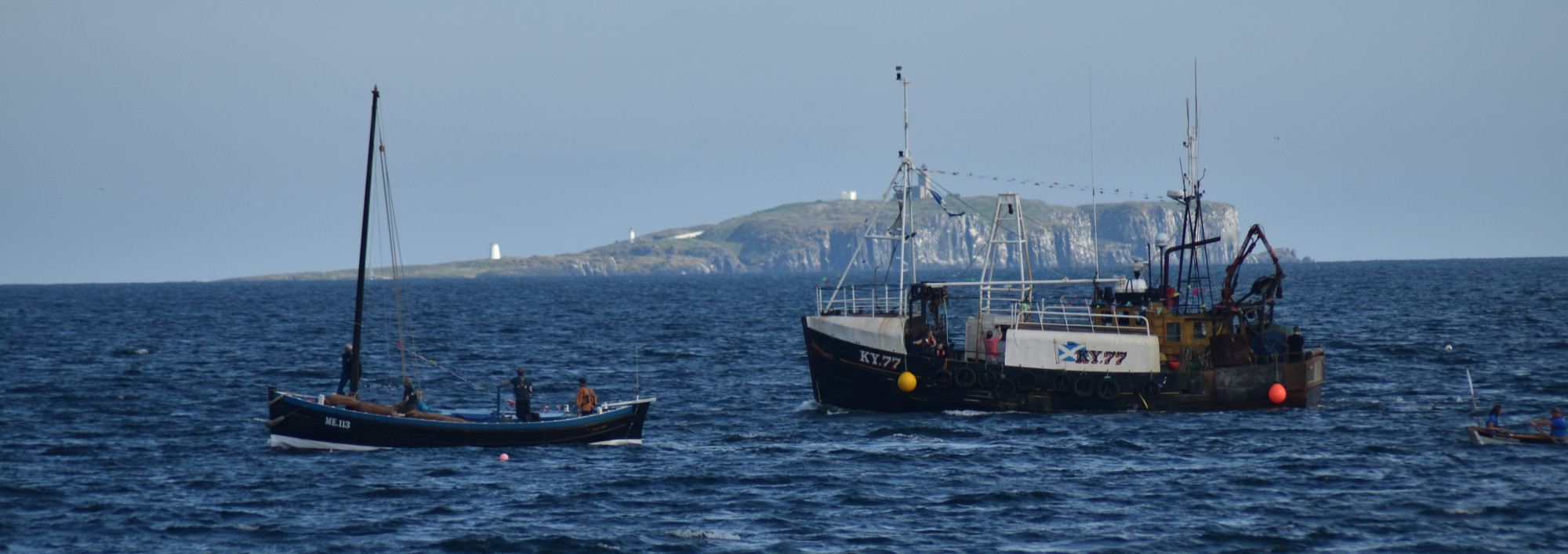William Watson Carstairs – East Fife Boat Building Company

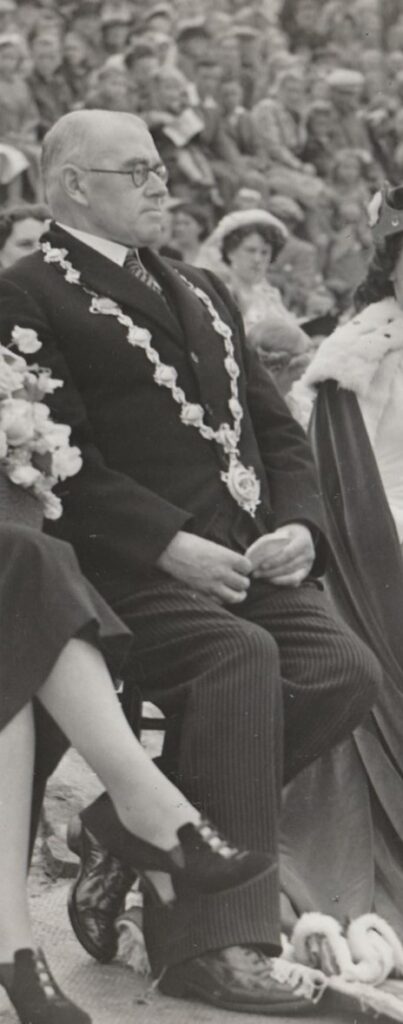
Provost William Carstairs
Willie Carstairs was son of a Cellardyke fisherman who had not followed his father to the sea but studied business, and by the 1930s owned one of Cellardyke’s most sucessful Oilskin Factories, John Martin and Co. he was also a member of the Fishery Board for Scotland.
Carstairs was a visionary who saw the demise of the steam drifter with its rising build costs and even greater running costs. He saw his share fishermen and Cellardyke community like many of Scotland’s fishing communities suffering in the economic depressed years at the end of the 1920’s and early 1930s.
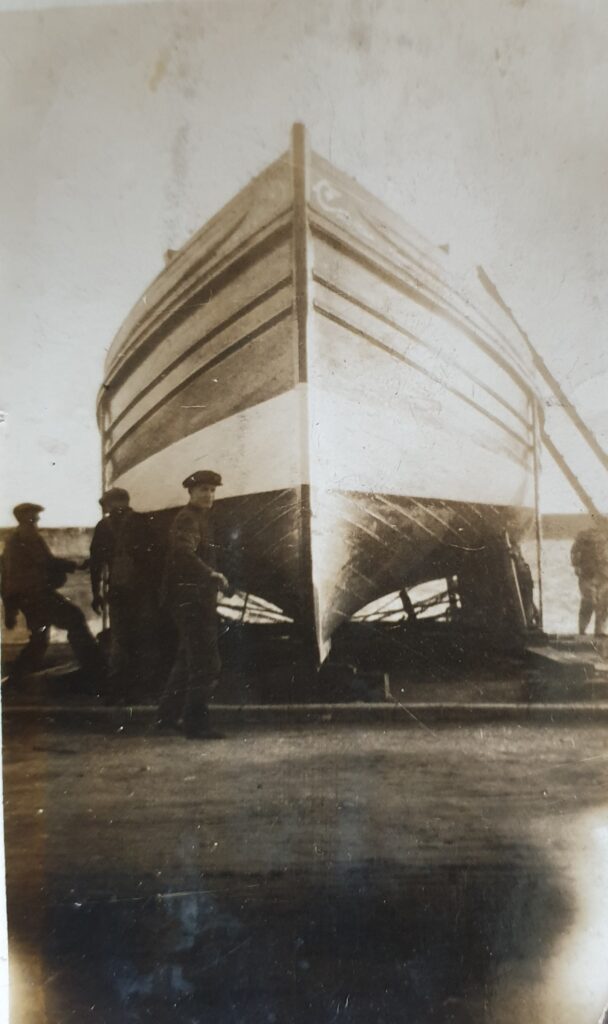
He was also a man who put his money where his mouth was and in 1928 commissioned two 53ft super bauldies (motor drifter/ liners), the Winaway KY279 from Alexander Aitken ( Aitken’s Anstruther yard stood where the Scottish Fisheries museum boat yard now operates from) and the Onaway from Walter Reekie boatbuilder of St Monans who opened his second yard next to the Lifeboat shed in Anstruther to build this boat. There was only a fortnight between their launches that November. Multiple newspaper articles expounded their efficiency. With semi diesel engines and their relatively low running costs they were seen as a step forward in fishing vessel design.
The Onaway and Winaway were very sucessful however these were motor vessels whose hulls varied little from the obsolete fifie sailing vessel with an almost vertical stem and stern post. They were ideal for some fisheries but at 53ft it was soon seen that they could not operate safely and compete with the 90ft steam drifters. This was all the more obvious in the important herring fishery in the winter seas off Yarmouth and Lowestoft.
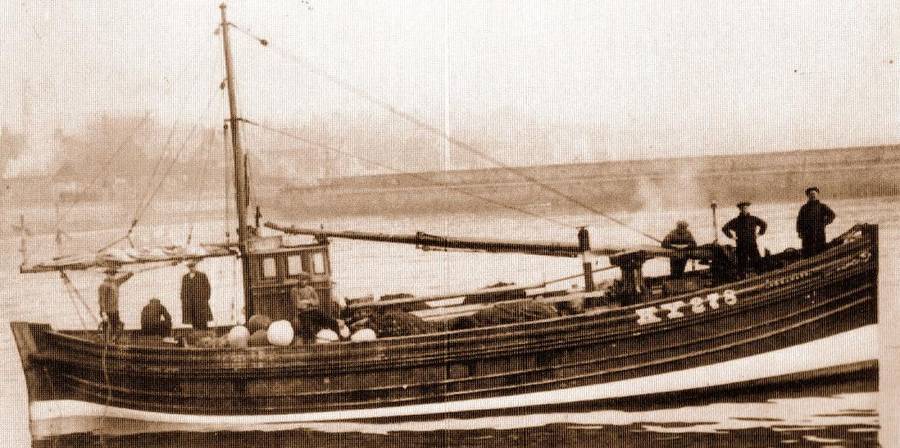
The Gleanaway KY 40
And so we come to a major milestone in the history of Scottish fishing boat design, in 1930 Willie Carstairs comissioned the Gleanaway KY 40 to replace the Winaway. She was the first cruiser sterned motor drifter, a 75ft wooden boat design not tweaked from the sailing fishing vessel design but specifically to his order developed as a motor boat. The Gleanaway was the mother of the Scottish and UK Fishing fleet. Her basic premise of hull design was prevalent in Scotland until the big transom sterned vessels were sucessfully developed.
J & G Forbes of Sandhaven cost to build was about £2800 this was approximately half the cost of a wooden steam drifter. The Gleanaway’s engine was larger and more powerful than Carstairs stated would be optimum size for economic efficiency. However her running costs were still only 1/3rd that of a steam drifter providing the fishermen with a much better share of profit after costs.



Mr Adamson Secretary of State for Scotland christened the Gleanaway.
The Royal Sovereign KY75 and East of Fife Boatbuilding Co


Six years later after the building of the Gleanaway, Provost Carstairs designed her replacement . With his usual consideration for the local commmunity, and with a thought for local employment he did not return to Sandhaven for the boat to be built. Willie Carstairs brought one of the Forbes family of the boatbuilding company in Sandhaven, George, to set up a a boatbuilder’s yard in Cellardyke.
The East Fife Boatbuilding Company took over the redundant boatyard in Cellardyke, that had been used by Alexander Cunningham, J A Millar and Thomson. It was just east of the harbour. Instead of building the boats in that yard and then dragging them to harbour for launch as the sailing fifies had been in the past. The Royal Sovereign’s (the Gleanaway’s replacement) construction took place on the harbourside known as the “bullwark”. The preparation work such as plank cutting and steaming was carried out in the old yard. Cellardyke Harbour is tiny. The 75ft Motor drifter was an impressive site when launched sideways on to a gathered crowd of 3000.
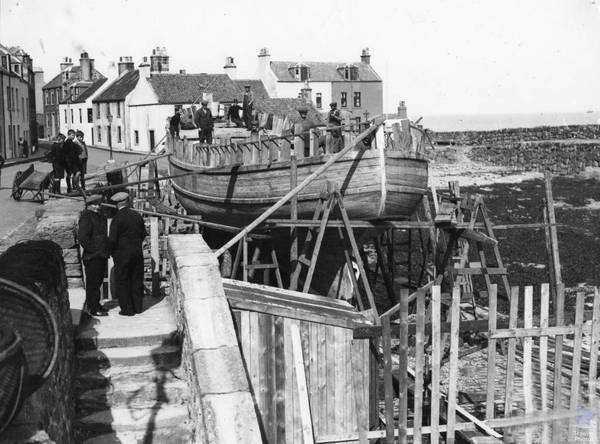

The yard only lasted two years, until 1938. It’s not known if the yard ran out of orders and George Forbes left, or if he left for another reason. He moved to Peterhead and ran a successful yard there. The closure of the yard and company brought an end to Cellardyke as a boat building town that seen many innovations from it’s boatbuilders. The introduction of the flush deck, the carvel method of construction and the development of the modern cruiser sterend motor drifter.

Royal Sovereign Sea Trials

Mr J. Henderson Stewart, M.P. for East Fife, and Mr George Hogarth, chairman of the Fishery Board for Scotland, were on board the Royal Sovereign for her sea trials. She was described as ”a boat which may do much to revolutionise the industry” . She was fitted with the next generation engine and included multiple safety improvements including being one of the first boats where the crew were able to travel from the accommodation to the wheelhouse/ galley without going on deck. At the launch Provost Carstairs’ quote about the efficiency of the Gleanaway which Royal Sovereign was expected to better was:- “Last season the steam drifter Breadwinner had a £445 crop, and the crew’s share was £16 a-piece. The Diesel oil-engine drifter Gleanaway had £438 crop, yet the share was £33 5s each”
Star of Hope KY 119
The next boat was built to the order of Messrs Tom Ovenstone, St Monance, David Corstorphine and Peter Boyter, Cellardyke. The vessel was fitted for the drift and ring net fishing, 54 feet over all by 17 feet 6 inches beam, driven by an 87 hp Davey Paxman engine using crude oil. She was Christened Star of Hope by Miss Janet Boyter. The vessel was later sold after WW2, re reg BK 28 and had a taller wheelhouse and galley added.
Owners –
1940 Maggie Ovenstone & others, St Monance
1945 John Dixon & James Dixon, Eyemouth, Regd. Berwick BK28
1964 Ernest J. Shaw, Glasgow, Regd. Campbeltown CN149
1967 James T. Buchan & others, Peterhead, Regd. Peterhead PD457
1972 Capt. Patrick J. Walsh & Mrs Irene F. Walsh, Whitley, Yorkshire, Regd. Peterhead PD51
1973 Bruce Baker, Grimsby
1977 Converted to pleasure craft and was last seen for sale as a yacht in Bremmerhaven, Germany in about 2014.




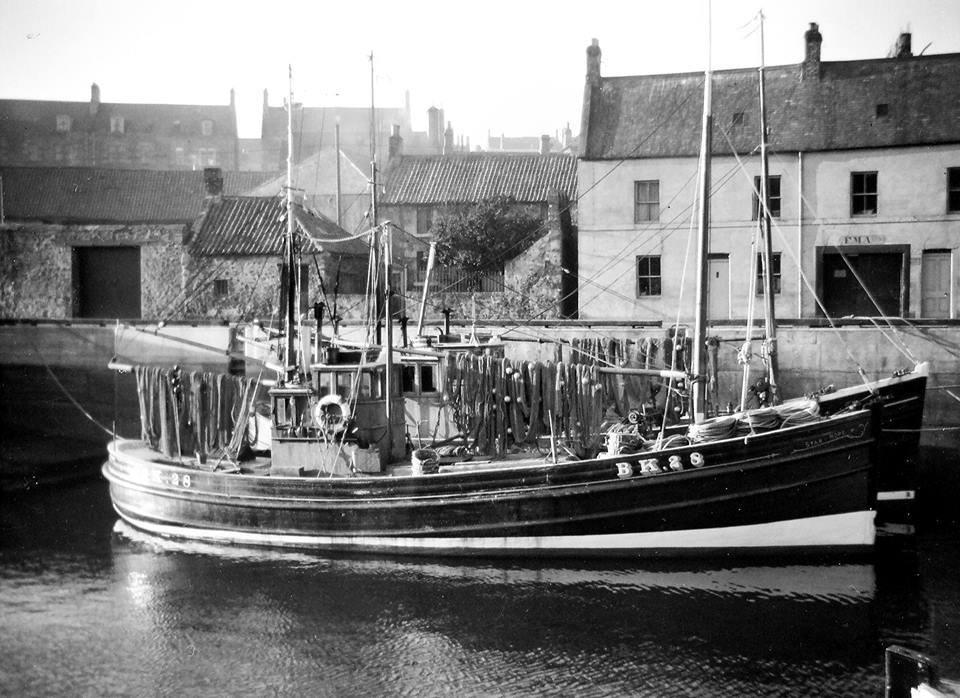


MANX BEAUTY PL35 – MANX FAIRY PL 43
In 1937 The Isle of Man Government placed an order with the East Fife Boatbuilding Co, Cellardyke for two fishing vessels. These were the Manx Beauty and the Manx Fairy. Similar orders went to J & G Forbes of Sandhaven for sister ships the Manx Lad and Manx Lass .
By subsidising a fleet of state of the art ring netters the Manx Government hoped to encourage young Manxmen back to the fishing. The Isle of Man’s large sailing fishing fleet rapidly declined into the 20th century and expensive steam powered fishing vessels did not attract investment. By the 1930s comparitively few young men on the Island saw prospects in the fishing trade. At the same time ring net fleets belonging the West Coast of Scotland and Ireland were working their waters very successfully.
Businessmen in Peel suggested setting up a company to reverse this decline. They sent a letter to the Isle of Man newspapers in December 1930 asking for support. It took until January 1937, when they were able to raise capital to build four vessels.
The Manx Government decision to invest in these vessels was to encourage their young men by giving the highest possible return/ wage against running costs. They came to a comparitively unknown yard in Cellardyke for these boats and did not go to Weatherheads Cockenzie, Walter Reekies or Jas N Millers of St Monans with established reputations for building quality ring netters as Provost William Carstairs was a high profile advocate for developing efficient vessels.


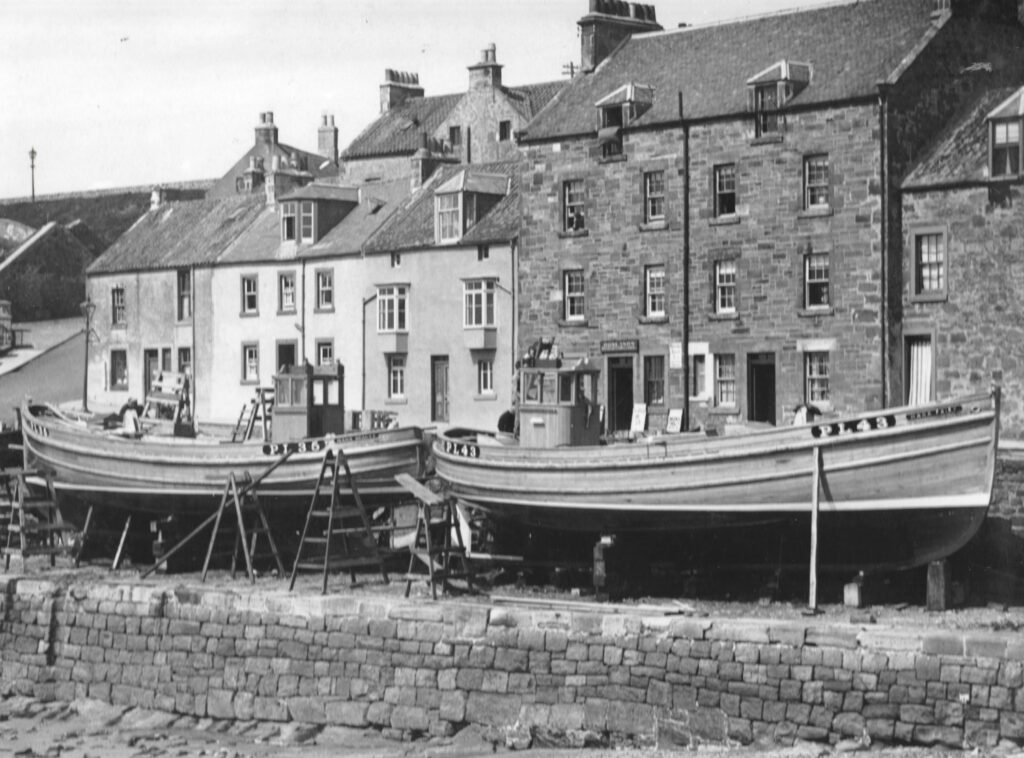

The launches of the Manx Beauty PL 35 and Manx Fairy PL 43 took place on the 11th June 1937 in front of a large crowd.





Manx Fairy 
Manx Beauty
On the 15th June the vessels were in Peel for their official naming ceremony
Manx Beauty – see pages for detailed history
Manx Fairy – sold from Isle of Man, she was owned in 1964 by Allan W Tennant, Appleton, Cheshire, reg Liverpool, LL14, c 1972 reregistered LL74 whilst under the ownership of E O Cemlyn-Jones, Penmaenmawr , and in 1978 her fishing registry was cancelled, The Manx Fairy was converted to a yacht and was kept in Penhryn, North Wales, whilst there she suffered a major fire but was rebuilt, In 1979 she was sold to Sweden, and sunk there, she was salvaged and put shore until 1987 when Erwin Naschenwng purchased her and renamed her Kess. He rebuilt her with an 5 ton iron keel and 2.5 tons of fibreglass coating under the waterline in 1987 she was approved by Swedish National Administration and was a member of the Stockholm Ship Association. and was last seen in Stockholm, about 2010.
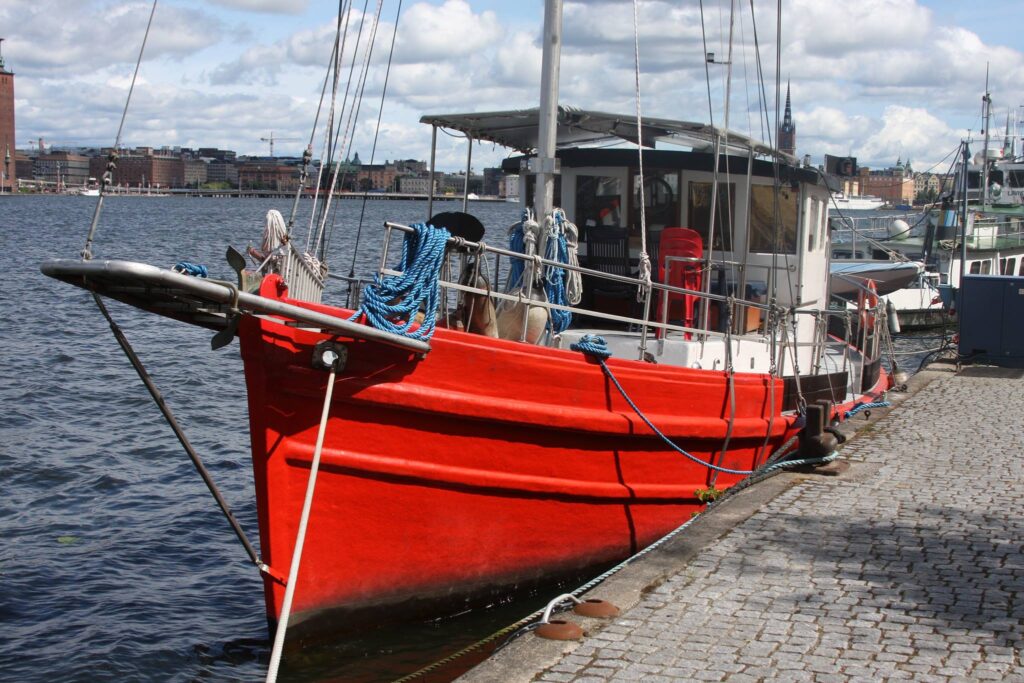
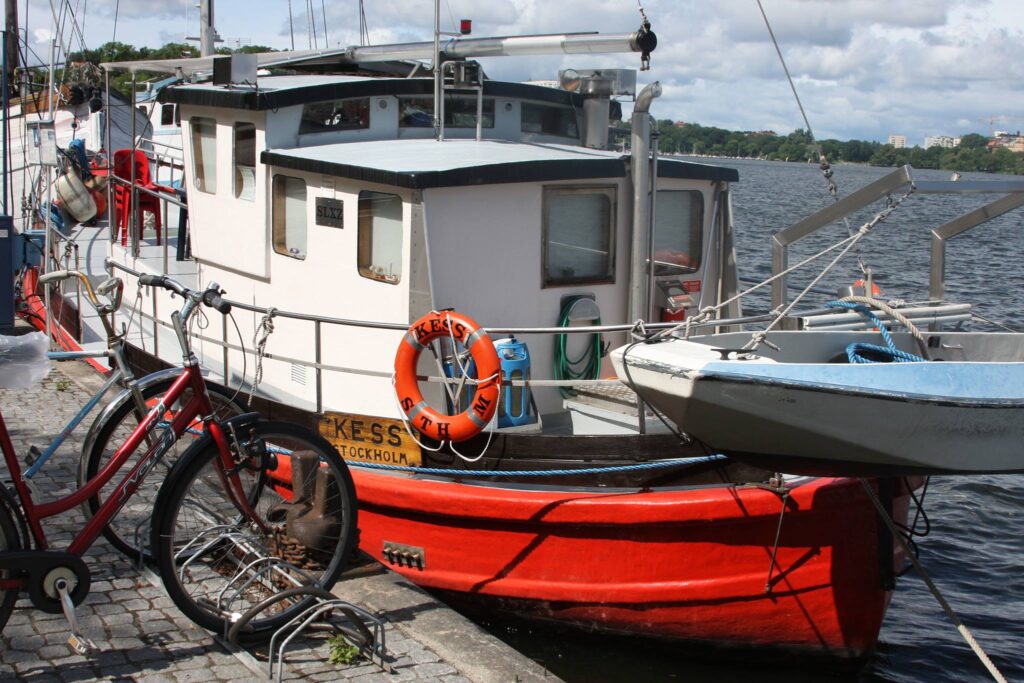
W.R. LISTER
The vessel can be seen on the bulwark alongside the Manx Beauty and Fairy and is an almost identical model. It was commissioned by Tees Pilot Cutters Middlesborough, in 1955 she was rebuilt after major structural damage in a storm. Built with a Davey Paxmen engine ‘Ricardo’ type of 80bhp and in 1962 she was re-engined with a 75hp Gardner 5LW. In 1975 she was owned by CDA Jones Contractors ltd. She cost £2218 to build and was sold in 1975 for £8150.


Refleurir KY 16
The last fishing vessel to be built at Cellardyke harbour – Built for Alexander (Ecksy) Keay Muir of Cellardyke to replace the steam drifter Refloresco KY 16, (details on these pages) the boat worked successfully at the traditional herring seasons, including visiting Yarmouth in the post war years. She was later sold to G A West and A Watt of Gardenstown and replaced by a partnership owning larger line fishing vessel as the herring fishing was declining rapidly.


1955 – 25th May – The .”Refleurir.” skipper Alexander Muir. has under gone extensive repairs and a new steel wheel-house has been fitted –
The following year 1956 – they built the 75ft line boat Ocean Gain at Gerrards yard in Arbroath and the Refleurir was sold on
22nd June 1956 – On Monday next the biggest fishing boat ever built in Arbroath will be from the Ladyloan yard of Messrs Gerrard Brothers. She is the Ocean Gain, built for Messrs Barclay and Muir, Cellardyke, Fife, for the Faroes fishing grounds. The boat will be named by Mrs Muir, wife of one of the owners. The Ocean Gain is 75 feet 6 inches in length, and has a beam of 29 feet 9 inches. She will take the water at about four o’clock on Monday afternoon. No bigger fishing boat has come from an Arbroath yard, although cargo vessels of over 100 feet in length were built by Alexander Stephen & Son, when they operated their shipyard, on almost exactly the same site as the present yard, 110 years ago.

The vessel renumbered BF48 was tragically lost with all hands on 3rd January 1968 (Location of loss cited as N58 27.75 W5 14.25).
Tuesday 30 July 1968
Aberdeen Evening Express
FORMAL VERDICT ON REFLEURIR THE GARDENSTOWN boat Refleurir, which was lost off Kinlochbervie January 3. was probably overwhelmed by a heavy sea in a northerly gale, a Board of Trade inquiry found today. Sheriff A. Hamilton, who conducted the inquiry with three assessors, gave the decision this afternoon. The entire crew of six were lost. The inquiry found that the cause the vessel’s loss was probably because she was overwhelmed by a heavy sea in a gale of force 8-9 on the port beam causing her to founder at once. The loss was not caused or contributed to by the wrongful act or default of any person or persons. The court was satisfied that the Refleurir was sea-worthy and well maintained. It had to be accepted that there had been serious and overwhelming inrush water. Had this not happened there would have been time to send out a radio call for assistance.This had happened before in the case of the loss of the Blue Crusader.
TRIM TOO
The last vessel to be built- a fifty foot cabin Cruiser called Trim Too – was not built along the bulwark but in the old yard, and unlike the fifies of the past she was not dragged along to teh harbour for the launch. Trim Tooo was launched over the broken down wall at the sea side of the yard, over the “shitey pipe” (sewer) at high tide. We Have no knowledge of the vessel after her launch.


Boats Built By the East Fife Boat Building Company
- Royal Sovereign KY 75, built 1936
- Star of Hope KY119, built 1936 – 54ft x 17ft 6′ – for Messrs Tom Ovenstone St Monance, David Corstorphine and Peter Boyter Cellardyke
- Manx Beauty PL35, built 1937 – 49ft x 15.75 x 5’9 for Isle of Man Fisheries
- Manx Fairy PL 43, built 1937 49ft x 15.75 x 5’9 for Isle of Man Fisheries
- W.R. Lister – Pilot Boat, built 1937 46ft x 15ft 2 x6ft 6′ for Tees Pilot Cutters, Midlesborough.
- Refleurir KY 16, built 1938, 16 tons, 56ft x 17ft x 6ft 7′, 132HP Kelvin Diesel for Alex Keay Muir
- Trim Too, Cabn Cruiser built 1938 for R Sandison, Glasgow, 50ft x 12ft x 4ft 5′
